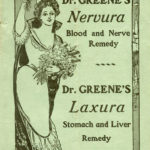Alienists stressed that the prompt treatment of insanity was imperative to a cure. They cautioned the public that it was far wiser to bring an afflicted person to an asylum for a cure as soon as possible, rather than let the patient languish at home for years until an asylum became a last resort. By that point, the disease might have too strong a hold and never be shaken.
Despite their sharp division of “acute” and “chronic” cases of insanity, few alienists wanted to shunt the chronic insane into separate asylums. First, few alienists wanted to be in charge of hopeless cases that gave them no scope for meaningful treatment and possible success. Second, alienists hated to pass sentence on patients, fearing that a “chronic” label would take away any chance for recovery that the patient might have had. Rather than give a patient a life sentence to custodial care, alienists preferred to keep these patients with their more hopeful cases on the remote chance that he or she could still make a recovery.
Lawmakers did not often share the alienists’ concerns. Custodial care was far cheaper than active treatment, and state legislatures usually felt that chronic patients unlikely to respond to treatment should not use up the state’s precious monies in a facility that actively treated acute cases. Against most alienists’ wishes, several asylums for the chronic insane were built. (Willard Asylum for the Chronic Insane in New York is perhaps the most well-known of these.) And, as the alienists had foretold, most patients in them spent the remainder of their lives in custodial care.








